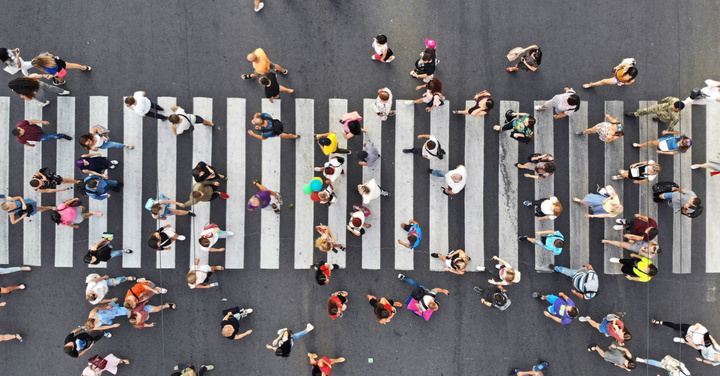Concrete is a highly durable material that provides lasting strength in a variety of applications. Its dependability is why building designers use concrete surfaces to construct parking garages, decks, and walkways. However, high-traffic areas get damaged over time due to moisture, chemical intrusion, and exposure to the elements. Foot and vehicle traffic tracks in salts, oils, and other debris, which can cause concrete to crack, break, and erode. This deterioration can lead to expensive maintenance projects down the road. Because of that, most building owners take preventative measures to protect concrete, especially in high-traffic areas. This article explores the advantages of traffic coatings and how professional technicians can help prolong the longevity of concrete surfaces at your building.
What are Traffic Coatings?
Traffic coatings refer to applying a specialized protective layer onto concrete explicitly used in high-traffic areas like vehicles and pedestrian areas. These products protect concrete surfaces against the intrusion of moisture and chemicals, helping to prevent substantial deterioration. Various types of traffic coating systems are available, and they range in pricing, installation requirements, and overall capabilities. The main goals are to create a moisture barrier that helps protect concrete from exposure to adverse climates and debris.
What is the Purpose of Traffic Coating for Concrete?
Parking decks get exposed to a variety of temperatures, especially if they are located in northern parts of the U.S. that experience extreme temperature fluctuations throughout the year. Seasonal weather patterns expose the concrete to ice, snow, and high heat, and vehicles track in salt, oils, and other debris that soaks into the concrete. The combination of weather and chemical intrusion adversely affects the integrity of concrete. These chemicals can also penetrate the steel, causing corrosion and rust, creating a whole other set of problems as this eventually requires a repair that probably costs a bundle. Since parking garages are considered high-traffic areas due to pedestrian and vehicle traffic, they are susceptible to deterioration. That is why traffic coatings offer solutions to help building owners protect their structures from the weather and debris carried into their facilities.
The Different Types of Traffic Coating Systems
This next section will list the different types of products used for traffic coatings and explore how their practical application provides distinct advantages.
Elastomeric Polyurethanes Systems
These polyurethane seals are perfect for parking garages that already have cracking, shrinkage, and other damage. This product is used as a stopgap to prevent further deterioration of structures, preventing concrete from being exposed to moisture and chlorides. This topcoat can improve the aesthetic look of older parking decks and ramps and offer skid resistance in the process. However, this system might need a further application, and it’s not an option building owners should utilize if they want extended service.
Epoxy Broadcast Systems
This covering option is popular among building owners as it’s a cost-effective solution that is relatively easy to apply, helping to reduce overall downtime. Epoxy broadcast systems are non-waterproof and are specifically designed for areas with moderate to heavy traffic. This system helps prevent concrete from the effects of mechanical movements.
Latex / Vinyl Copolymer Systems
This economical, non-odor sealer offers breathability for concrete. Aesthetically pleasing, the application resembles the actual color of concrete, and the sealant is highly permeable. The drawback, however, is that the product offers no waterproofing, and the product itself is prone to cracking and breaking. Therefore, this use is primarily for building owners looking for a temporary solution.
Polyurethane Systems
This solution offers a strong waterproofing sealer that provides a variety of aesthetic options for building owners looking to style their high-traffic areas. The main advantage of polyurethane is that the material can help seal already-cracked concrete areas, preventing further damage to those areas. However, the material is also more difficult to install and is rather sensitive to moisture. Therefore, it is best for areas not directly exposed to the elements.
PMMA/PUMA Systems
Polyurethane-Methacrylate (PUMA) and Polymethyl Methacrylate (PMMA) can be applied to concrete surfaces at low temperatures and offer rapid drying speeds, significantly reducing downtime for high-traffic areas. These materials produce a very pungent odor and must be applied in well-ventilated areas. PMMA/PUMA must be applied to dry surfaces and is less effective on wet concrete surfaces where it will not adhere properly. Also, these systems require the combination of multiple chemicals, and their proper mixture must be exact at the time of application.
Sealers
An economical option that is easy to apply directly to concrete surfaces, sealers are sprayed directly onto the existing concrete and do not change the aesthetic look of the material. Sealers are an excellent choice for building owners looking for an easy solution but one that requires a frequent application. Also, sealers do not offer waterproofing or skid resistance and are limited to where they provide the most service, mainly in new construction projects.
Valcourt is the Expert for your Traffic Coatings Solutions
Traffic coatings help protect high-traffic areas, preserve the longevity of concrete structures, and provide an aesthetically pleasing look that will bring lasting building. These solutions help reduce long-term costs for repair and maintenance, helping your parking garage or walkways endure the elements and traffic for years to come. Valcourt is the trusted building service that thousands of companies depend on to maintain their properties. Regarding traffic coatings, Valcourt has you and your concrete covered. Give Valcourt a call today!
